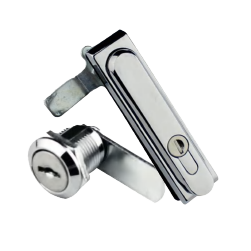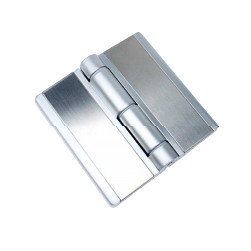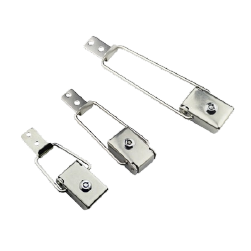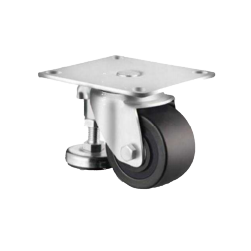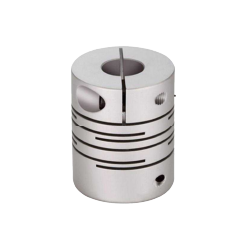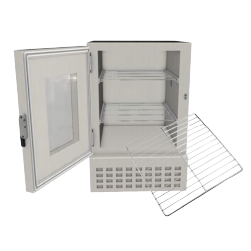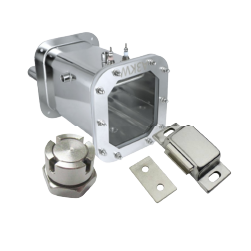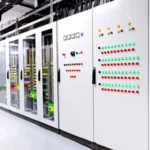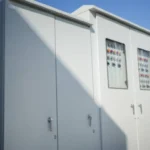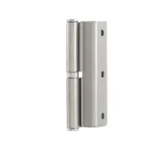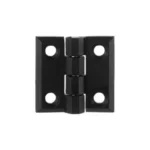Introduction
Modern industrial operations are dependent on the integrity of critical electrical equipment and electronic systems. However, there is a silent and constant menace in the very enclosures, including electrical housings, that are meant to save them: condensation. Moisture formation within an electrical cabinet or electrical panels is not a small nuisance, but a direct precursor to equipment failure, operational shutdown, and serious safety risks.
Learning about the processes of condensation and having an effective prevention strategy plays a key role; it is not a measure of choice, but a basic requirement of good engineering practice. This article is a comprehensive, technical guide to the diagnosis of the cause of condensation and the implementation of effective preventative measures.

What Is Condensation in Electrical Enclosures
Technically, condensation forms are the physical processes where a substance that is in a gaseous state is converted to a liquid state. In the context of an electrical enclosure, this can be defined as specifically water vapor in the air condensing to form liquid water droplets on the interior surfaces. It happens when the temperature of a surface is lowered to or below the condensation dew point of the air with which it is in contact. The dew point is the temperature at which air can no longer hold a certain amount of water vapour in the gaseous state (100 percent relative humidity). The next step of liquid water formation adds a conductive and corrosive component to a sensitive environment, which essentially undermines its integrity.
What Causes Condensation in Electrical Enclosures
The formation of condensation does not occur as a single event but is a product of a combination of physical and environmental conditions. It is important to have a thorough knowledge of these root causes in order to develop a mitigation strategy.
Temperature Fluctuation
A temperature difference is the main cause of condensation. The amount of the air’s water vapor that air can hold is directly proportional to the air temperature; warm air can hold much more moisture than cold air. When warmer, moist air within an enclosure is in contact with a cooled inner surface below the dew point of the air, condensation is bound to take place. This temperature difference may be between the internal air temperature inside and the walls of the enclosure’s temperature, or between various parts of the cabinet itself.
Environmental Conditions
The external environment is very important in the formation of an environment that is conducive to condensation. One of the main causes is diurnal cycles, or natural changes in temperature during the day and night. An enclosure exposed to direct sunlight will quickly lose its heat at night, so that the internal surfaces will be below the dew point of the air inside. A significant factor is also geographic location; installations in coastal, tropical, or subtropical areas with high ambient humidity levels, or those in damp areas near bodies of water, are much more at risk than those in arid climates.
Rapid Temperature Changes
Although the gradual changes in temperature are one of the factors that lead to condensation, the sudden decrease in temperature from rapid air temperature changes is one of the major factors that worsen the situation. An unexpected rainstorm on a hot day may bring the outside and inside surfaces of an enclosure to a very low temperature in a few minutes. Likewise, in an industrial environment, the closure of heat-generating equipment may result in the internal ambient temperature dropping rapidly, resulting in rapid and heavy condensation on all internal surfaces prior to the internal air pressure and humidity being able to equilibrate.
Lack of Ventilation
Air is trapped in a closed or ill-ventilated space. Any moisture that gets into the enclosure, either during initial assembly, through microscopic leaks, or by the breathing effect, has no way to escape. This causes an increment in the internal relative humidity over time. When this trapped, moisture-laden air is exposed to temperature fluctuations, the risk and extent of condensation events become much more probable and severe. Lack of air exchange, including a lack of passive ventilation, does not allow the removal of moist air and the supply of drier, fresh air.
Equipment Aging
Enclosures and their parts are not exempt from the impacts of time and exposure to the environment. Seals and gaskets are especially susceptible. Elastomeric gaskets may experience compression set over many years of service, losing their original shape and elasticity. They are also prone to brittleness and cracking under UV or chemical attack. This wear and tear undermines the seal between the door and the enclosure body, providing avenues for the entry of moisture, thus rendering the high-rated enclosure useless.
Installation Problems
The quality of the enclosure is as important as its proper installation. Many of the condensation problems can be linked to the mistakes in deployment. The most prevalent of these is the incorrect sealing of conduit entries and cable glands for electrical cables. Unless these entry points are airtight, they become direct pathways of humid air, dust, and even liquid water. Other issues are the misaligned doors because of the wrong installation of the hinges or the holes drilled in the enclosure without being sealed properly, which is against the integrity of the designed system.
Other Unknown Issues
In addition to the more obvious reasons, there is a less familiar but very potent reason, the breathing or respiration effect of an enclosure. When internal components become hot in operation, the air within the cabinet is heated and expands, generating positive pressure and pushing some air out even through the smallest of openings. As the components cool, the internal air contracts, producing a negative pressure that draws in new, possibly humid air outside. This daily cycle is a very efficient pump, and keeps the moisture coming into the enclosure, even a seemingly well-sealed one.
Risks and Damages from Moisture Inside Electrical Cabinets
Liquid water in an electrical cabinet is an unacceptable condition that has dire consequences. The risks are complex, affecting the reliability of electronic devices, operational life and safety of personnel.
The most immediate risk is direct electrical failures. Conductors, terminals or traces on a printed circuit board (PCB) can be shorted by condensation accumulating, causing disastrous short circuits. This has the potential to immediately damage sensitive and costly devices like Programmable Logic Controllers (PLCs), Variable Frequency Drives (VFDs), and power supplies. Excessive condensation in high-power applications may cause a hazardous arc flash, which is a deadly hazard to staff.
In addition to instant failure, corrosion is a gradual and insidious destroyer. Water vapour triggers an electrochemical reaction that causes corrosion of metals. Terminals, busbars and component leads will corrode and deteriorate, causing higher electrical resistance, overheating and eventual failure of the connection. This may be in the form of hard to detect phantom faults and random system crashes.
The life cycle of all internal parts is severely shortened. Insulation materials are capable of absorbing moisture which reduces their dielectric strength and causes leakage currents. Finally, the regular occurrence of moisture will ensure early failure of the whole system, resulting in unscheduled downtime, lost production, and high replacement costs.

How to Prevent Condensation in Electrical Enclosures
A successful prevention strategy is typically multi-faceted, often combining both active and passive methods to create a stable and dry internal environment.
Active Methods
Active methods involve the use of powered devices to control the climate inside the enclosure.
Anti-Condensation Heaters
The simplest way of prevention is to make sure that the temperature of the internal surfaces is never below the dew point. Anti-condensation heaters are usually convection or fan-assisted heaters that increase the amount of heat and warm the air within the cabinet. Condensation is effectively avoided by keeping the internal temperature at a fixed value above the outside temperature. To ensure maximum efficiency and avoid overheating, a thermostat should be used to control heaters.
Forced Ventilation / Filter Fans
Forced ventilation is a good solution in applications where the surrounding external air is always drier than the internal air. A filter fan unit, similar to blower fans, maintains positive pressure within the enclosure, continuously replacing the warm, moist air within the enclosure with cooler, drier ambient air. There is also a cooling effect with this method. It is important that the fan should be equipped with a filter to avoid the entry of dust and other pollutants.
Thermoelectric Dehumidifiers
A thermoelectric enclosure dehumidifier is a very effective solution for well-sealed enclosures. These are Peltier effect devices. A thermoelectric module is used to cool a small heatsink to a temperature below the dew point, where moisture in the internal air condenses on the surface of the heatsink. Like the first option, this water is then directed to a reservoir or poured out of the enclosure. They are actively dehumidifying without the need of large air exchange.
Enclosure Air Conditioners
An enclosure air conditioner is usually the best solution in applications where there is a high internal heat load due to active components with high input power. Besides offering essential cooling to prevent overheating of electronics, an air conditioner is a very strong dehumidifier, with different types available for various needs. In cooling the air, it causes a lot of water vapor to condense on its evaporator coils, which is drained off. This forms a closed loop of cool dry air.
Backfill with Dry Nitrogen
An advanced technique is purging or backfilling the enclosure with an inert, dry gas such as nitrogen to create an inert environment. This is often done in highly sensitive or hazardous-location applications (e.g., NEMA 7). A small positive pressure is produced with a gas of extremely low dew point, making it physically impossible to allow moist ambient air to enter. This totally rules out the possibility of condensation and necessitates a source of nitrogen and close control of pressure.
Passive Prevention
Passive methods are non-powered solutions that rely on the physical design and materials of the enclosure system.
High IP/NEMA-Rated Enclosures
As an enclosure manufacturer or system integrator, your reputation is based on the reliability of your products long after installation. End-users experiencing condensation problems not only risk equipment failure, but also corrosion, mold and electrical shock, which are expensive and hard to remedy.
Specifying an enclosure with a high Ingress Protection (IP) standardized by bodies like the International Electrotechnical Commission and recognized for its international protection, or an equivalent of NEMA rating (e.g., IP66, NEMA 4X) is the foundational first step. Understanding the differences in the NEMA and IP ratings systems is crucial for proper specification. These ratings confirm that the enclosure is built to provide a closer look at the amount of protection against the entry of external contaminants such as dust and liquid water ingress. It is a fatal error, however, to suppose that a high rating by itself will prevent condensation. It prevents the entry of external liquid; it does not control the moisture that is already in the internal air. This difference emphasizes the significance of the electrical cabinet parts.
The hardware serves two important functions: First, it makes sure that the enclosure is rated to its IP rating by offering a dependable seal for all enclosure types, from large industrial components to smaller indoor cabinets. Second, it creates a stable internal environment that is required to have effective climate control systems (heaters, dehumidifiers) functioning. At the design stage, considering these components is critical.
At KUNLONG, we understand the critical role of hardware in maintaining enclosure integrity. With over 20 years of dedicated experience, we have built our reputation on a foundation of uncompromising quality and engineering excellence. Our commitment is demonstrated through a rigorous quality control system, where every batch undergoes 15 distinct inspections to ensure 100% reliability, and precision manufacturing with tolerances controlled to an exceptional 0.0005mm.
This meticulous process guarantees that every lock, high-compression latch, and heavy-duty hinge delivers consistent performance against pressure, vibration, and environmental stress. Furthermore, with an in-house R&D team that has completed over 700 custom functions, we offer full OEM/ODM capabilities, serving as a dedicated technical partner from design to implementation. By choosing KUNLONG, you are selecting a certified expert (ISO9001, ROHS) committed to ensuring your enclosure’s long-term reliability, protecting your critical assets, and safeguarding your professional reputation. For further information, please contact us.
Breather Vents and Drains
Breather vents are tiny, advanced mechanisms that deal with the breathing effect. They employ a special microporous membrane (e.g., ePTFE) that permits the passage of air and water vapor molecules, and balances pressure with the external environment. The good news is that this leads to less condensation. But the surface tension of the membrane does not allow bigger molecules of liquid water to enter. A drain vent, usually placed at the bottom of the enclosure, serves the same purpose, but also lets any liquid condensation that may have formed drip out.
Appropriate Enclosure Materials
The enclosure itself, in terms of the material it is made of, also influences condensation. Metals such as steel and aluminum are highly thermally conductive, and thus, they cool off very fast when the ambient temperature decreases, which facilitates condensation. Polycarbonate or fiberglass are non-metallic materials with reduced thermal conductivity. and provide better insulation. They are more effective insulators, which slows down the cooling rate of interior surfaces and, therefore, decreases the intensity of condensation.
Anti-Condensation Coatings
The interior surfaces of an enclosure can be coated with specialized corrosion inhibitor sprays coatings. These coatings have two ways of operation. Others are hygroscopic and may take up a certain quantity of moisture, which is subsequently given off when the weather is drier. Others act by lowering the surface tension of the metal, so that condensing water will form a thin, uniform film instead of discrete droplets that might drip onto components.
Add Silica Gel
Desiccants such as silica gel may be a suitable, inexpensive alternative to power in small, well-sealed enclosures where no power is available. These materials absorb water vapor in the air and hold it in their structure. The main drawback of desiccants is that they have a limited capacity. When they become saturated they are ineffective and have to be replaced or regenerated by heating them to expel the moisture absorbed.
Choosing the Right Solution for Your Application
No one solution fits all applications. The choice of the most efficient and cost-effective strategy is a systematic assessment of the particular operating conditions. The decision will be made by answering the following questions:
- Is the enclosure an indoor or outdoor enclosure? Outdoor enclosures experience greater temperature fluctuations and direct sunlight, which in many cases require more powerful solutions such as heaters or air conditioners.
- How big is the enclosure? Any heater, fan, or dehumidifier will require a certain capacity that will be determined by the internal volume.
- What is the range of ambient temperature and humidity? An air conditioner might be needed in hot and humid conditions all the time. A heater is necessary in places that have cold nights.
- What is the amount of heat produced by the internal components? Internal heat load is high, so cooling (fans or A/C) is needed, whereas a low heat load may only need a heater to keep above the dew point.
- How much do you have to spend? Passive and simple heaters are cheap, whereas air conditioners and nitrogen purge systems are a substantial capital investment. The price of possible failure should be compared to the price of prevention.
To see how these principles apply in practice, explore our detailed guide on the different electrical enclosure types and their specific applications.
Common Condensation Prevention Mistakes to Avoid

- Relying solely on an IP/NEMA Rating: It is a basic mistake to think that a NEMA 4X box is impervious to condensation.
- Completely Sealing an Enclosure with an Internal Heat Source: This gives an oven effect and does not prevent condensation of the trapped air. There must be some sort of climate control or pressure equalization.
- Undersizing Climate Control Equipment: A heater or fan that is too small to handle the volume of the enclosure will not work. Never fail to do proper sizing calculations.
- Disregarding Conduit and Cable Entries: A single, unsealed cable gland can defeat the most advanced enclosure. All the penetrations should be sealed.
- Blocking Ventilation: Enclosures should not be installed too near walls or other objects, which may block the airflow of filter fans or vents, making them ineffective.
Long-Term Inspection and Maintenance for Lasting Protection
A condensation prevention system is not a “set and forget” solution. It requires periodic inspection and maintenance to ensure its continued effectiveness throughout the life of the installation. A routine maintenance schedule should include:
| Task | Recommended Frequency | Purpose / Notes |
| Inspect door gaskets and seals for cracks or deformation | Quarterly | Check for cracking, brittleness, or compression set that may compromise sealing |
| Clean or replace air filters in fan units | Monthly | Ensure proper airflow and prevent dust buildup that reduces ventilation efficiency |
| Check breather vents and drain holes for blockages | Semi-annually | Remove dirt or insect clogs to maintain effective pressure equalization and drainage |
| Test heaters and thermostats for proper function | Annually | Verify that heating and temperature control systems are working as intended |
| Visual inspection for signs of corrosion or moisture | Periodically (at least annually) | Detect early signs of internal damage due to condensation |
Conclusion
Condensation in electrical enclosures is a serious and complex threat to the reliability and safety of critical infrastructure. It is an engineering problem that can be successfully solved in a systematic and proactive manner. The integrity of the internal environment can be ensured by properly determining the environmental and physical causes, choosing the best way to set of active and passive prevention measures, and adhering to a long-term maintenance schedule. This care is not a cost, but a necessary investment in the continuity of operations and long-term security of your most valuable assets.

